The Potato in Fine Art
Do you prefer your potatoes in a landscape or in a still life or in a stew? Come with me on a tour of the humble potato in art.
Candy Bedworth 3 May 2024
Fresh produce, herbs, dappled sunlight playing through trees and onto picnic spreads, fruit, and vegetables are all ingredients for the perfect meal to savor on a summer day. These elements were a source of inspiration for many artists, whose paintings are like the tantalizing promise of wonderful food. Can summer meals be inspired by art?
Let’s start our list of summer meals depicted in art with a breakfast! The summer of 1883 in France was perfect. The mornings were calm, it was neither cold nor hot. To seize the opportunity, the Sargent family rented an apartment in the south of France. While enjoying the summer, John Singer Sargent (1856–1925), an American artist, painted his younger sister, Violet. She is peeling an orange in the middle of her morning reading at breakfast.
French impressionists inspired Sargent to explore the effects of light and shadow. As a result, his loose brushwork and muted color palette, accentuated by bright white, remind us of the paintings of Edgar Degas and Édouard Manet. Filled with ceramics, crystal, crisp white linens, and shimmering silver, The Breakfast Table captures the look and feel of the well-appointed French apartment.

The tradition of breakfast as we know it today started in the 18th century. Before the French Revolution of 1789, breakfast was the meal of workers. In rural society, farmers generally had a cup of black coffee on waking, then a bowl of soup, and a few hours later a morning snack or casse-croûte. It included a loaf of bread with cheese or pork meat and wine. The crust had to be broken, therefore crispy food was linked with the morning meal. The French term petit déjeuner, or breakfast, was introduced at the end of the 19th century and the current three meals pattern was set up.
Inspired by Sargent’s painting, at breakfast you may need:
After the perfect breakfast, it is time to relax in a beautiful garden. To relish the summer days, Peder Severin Krøyer (1851–1909), a Danish artist, rented a cottage in Skagen, in a then a remote fishing village on the northern tip of Denmark. He painted his wife, Marie, sitting in a deckchair with her dog, Rap, at her feet. The garden is full of the white rosebush, completely obscuring the house.
This rose bush is of a very fragrant variety called Rosa alba maxima. It is one of the longest-living of all roses. Muddled double blossoms are white with creamy tinted centers. The motif and depiction of light have similarities with the paintings of French Impressionists, such as Claude Monet.
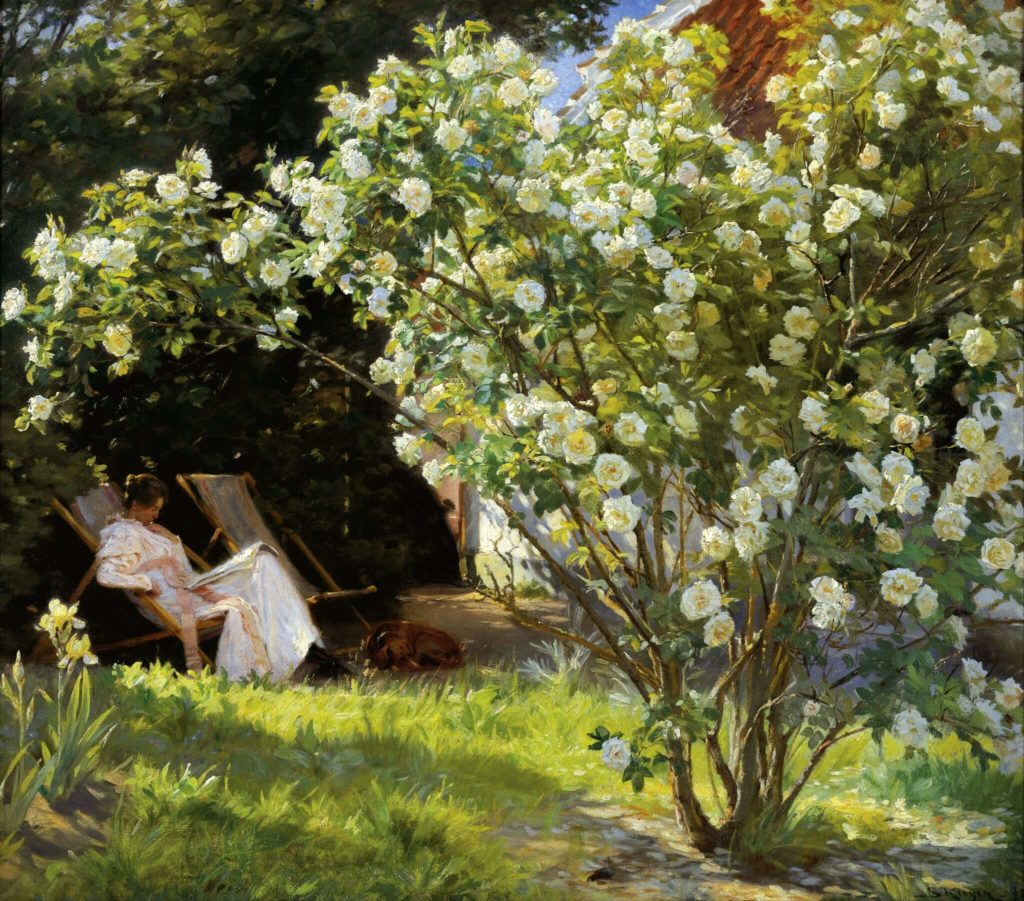
After basking in warm sunshine, it is time for a coffee break. The practice of infusing ground-roasted coffee beans in water may have begun in the 15th century. In the Islamic world, the Sufis drank coffee in a devotional context. By 1510, coffee had spread from the monasteries of Yemen into general use. Consequently, the consumption of coffee permeated every level of society. Then, the habit of drinking coffee reached Turkey, where the Arabic word for the new beverage, kahveh, got its name.
In Europe, coffee became fashionable in the second half of the 17th century. Nevertheless, in the 18th century, with the growing popularity of the much cheaper tea, coffee went into a decline as a mass drink. Originally, the word for ‘coffee-house’ was cafeteria, derived from the Spanish cafetero or ‘coffee seller’. However, in the early 19th century, the French term café began to mean a ‘coffee-house’.
Whether in a summer cottage or at the coffee table, drinking a cup of coffee can give you an opportunity to ponder and relax. You can even munch on a piece of toast. It is as though time begins to slow down.
While painting At the Coffee Table, Edvard Munch (1863–1944), a Norwegian artist, may have reflected on his emotional status. The flow of paint shows the unhurried passage of time and peaceful contemplation. At the same time, the bursts of the advancing red around the coffee cups point to the inevitability of change from one state to another.
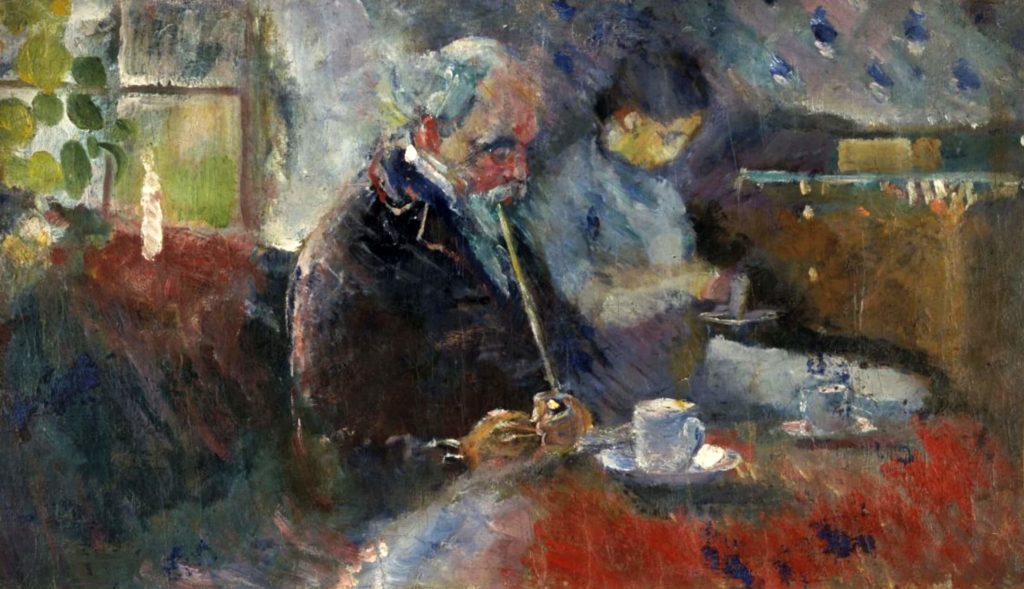
The summer is the perfect time to savor fresh fruit. Many painters visualized these gifts of nature in their still lifes. One such artist was a German painter Emilie Preyer (1849–1930). Since women were not allowed to enroll in the Düsseldorf Royal Academy of Art, Emilie became her father’s (who was also a painter) unofficial pupil. She devoted herself exclusively to still-life painting.
Her painting Still Life with Fruit has such wonderfully vibrant colors and rendering of light effects that you want to take the fruit and eat it right away. Emilie Preyer often included one or more insects in her paintings – another typical element of summer meals.
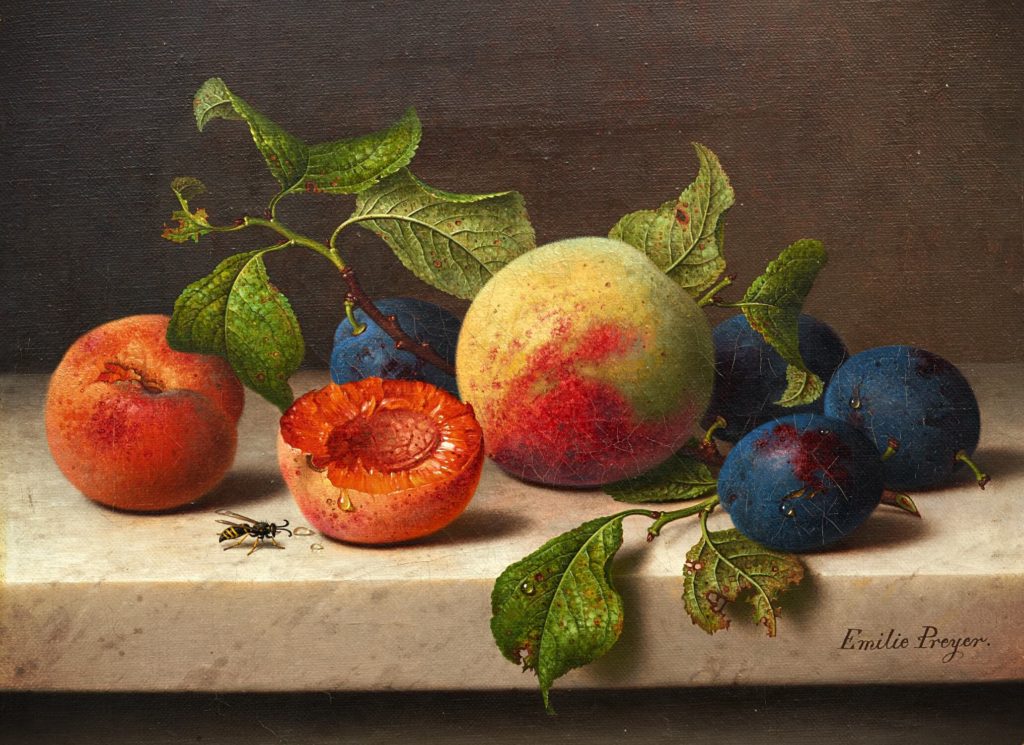
Because of their short life span, insects in still lifes could have emphasized the transience of life. At the same time, they helped to turn these paintings into microcosms. Insects offer surprise and delight to the viewer and act as viewers themselves, feeling the surfaces, and observing the still life from different angles.
After the coffee break and a morning meal, why not take a trip in a skiff, a small rowboat? Fashionably dressed women, boats, and the sunlit Seine inspired French impressionists to paint this kind of scene. To create an effect of summer heat and light in The Skiff (La Yole), Pierre-Auguste Renoir (1841–1919) used bright paint without black or earth tones. He probably depicted the river near Chatou, ten miles west of central Paris, a popular spot for vacation and recreational boating.
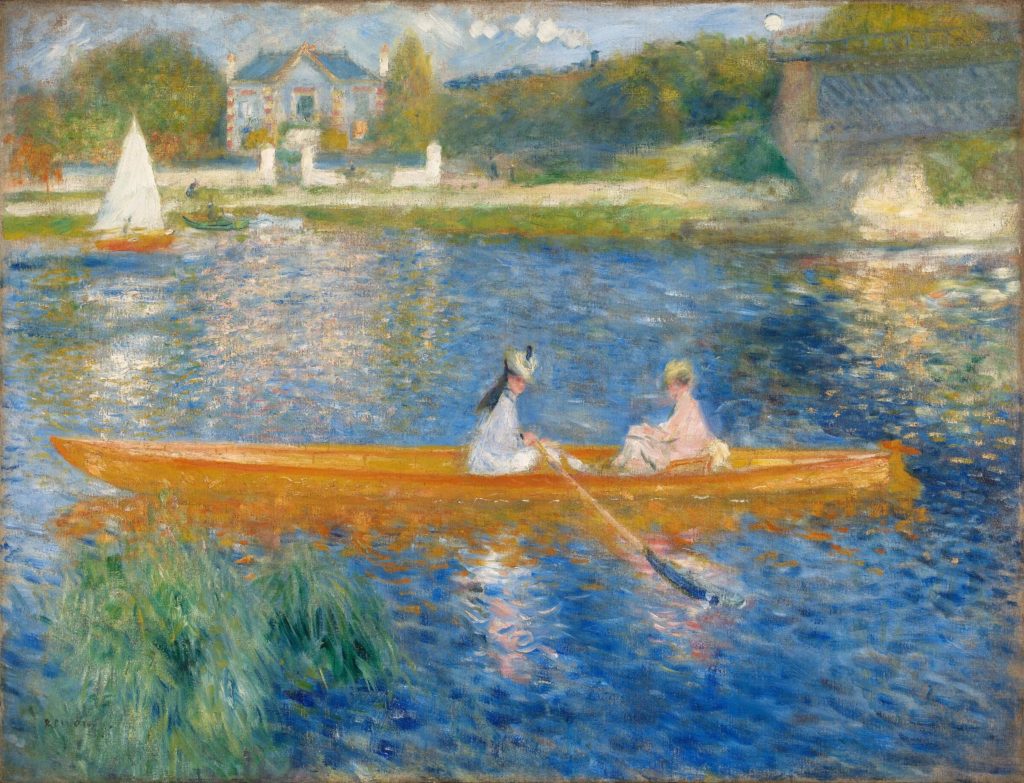
Renoir deliberately used complementary colors. For example, he placed the bright orange boat against the dark blue water. Consequently, when seen alongside each other, the colors seem more intense. A dense mesh of strokes conveys the shimmering play of light, especially upon the water. The strokes are distinct in the foreground and mid-distance but softer for the trees in the background.
The two women in The Skiff (La Yole) might have made a trip to the boating party. However, before the party begins, somebody should bring bottles of wine. The wine expresses the sensibility of its maker, the history and culture of the people, and the vitality of nature. Wine has also emotional resonance, as well as symbolic, and metaphorical meaning. It is a collaboration between nature and culture.
A German artist, Friedrich Geselschap (1835–1898), inspired by the Italian Renaissance masters, painted the Portrait of a Boy. The page boy in the costume carries wine bottles and glasses, as though inviting us to join the party.
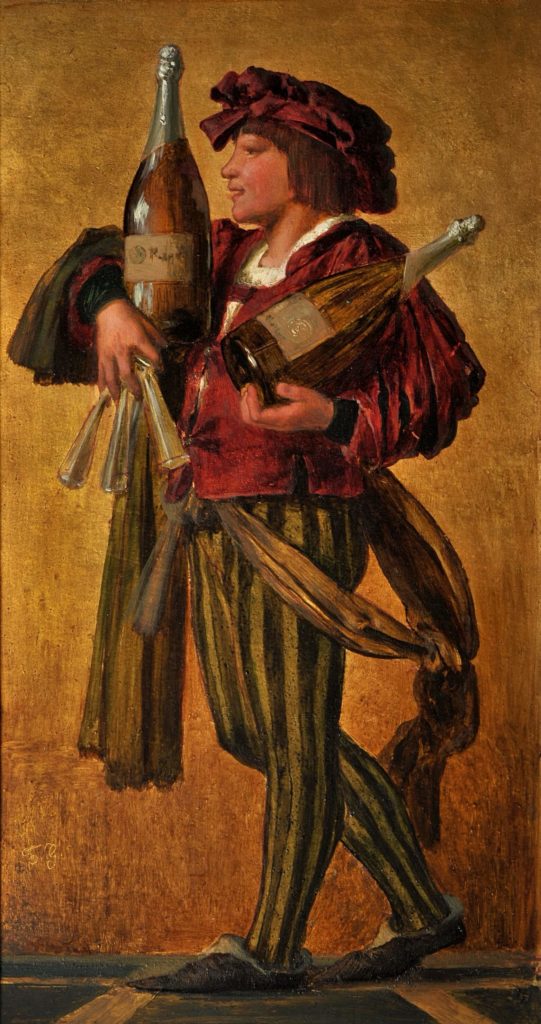
However, if you do not drink alcohol, this is OK, because:
Water, taken in moderation, cannot hurt anybody.
Mark Twain
For a party, Parisians often flocked to the Maison Fournaise restaurant in Chatou. In summer, they rented rowing skiffs and ate a good meal. In his painting Luncheon of the Boating Party, Pierre-Auguste Renoir captures the idyllic atmosphere of the event. His friends share food, wine, and conversation on a balcony overlooking the Seine.
Renoir’s painting reflects the changing character of French society in the mid- to late 19th century. The restaurant welcomed customers of many classes, such as artists, actresses, writers, seamstresses, and shop girls. This diverse group embodied a new, modern Parisian society.
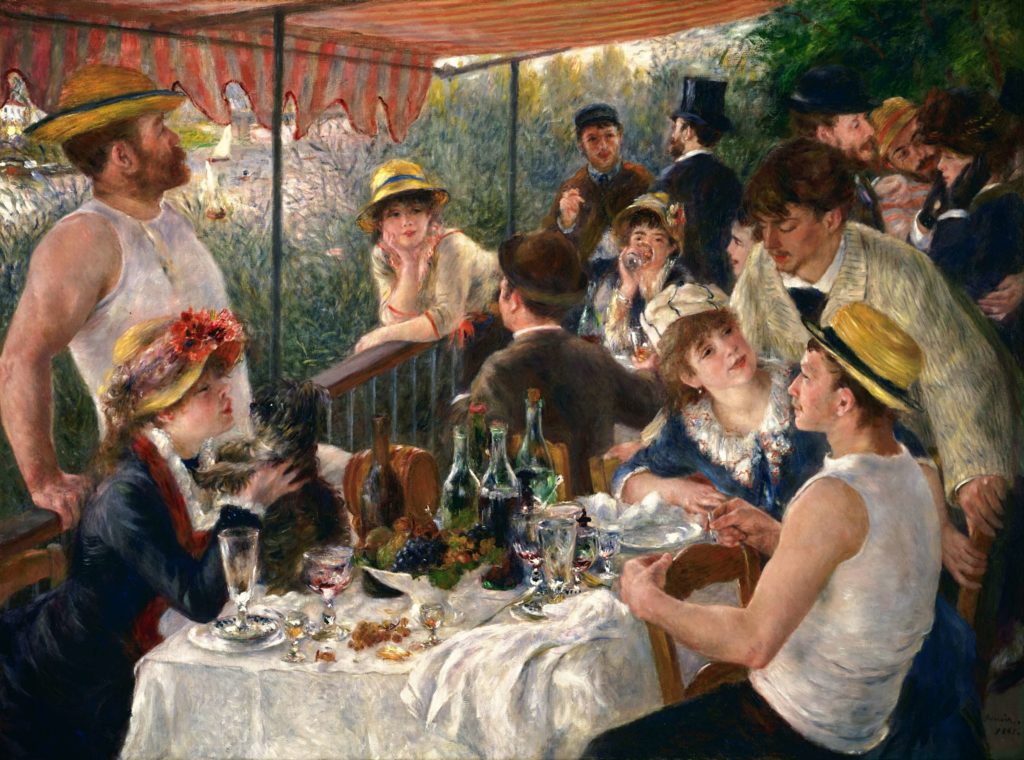
Renoir decided to include actresses and models in his painting. One of them is Jeanne Samary, standing at the back on the right. Another actress is Ellen Andrée, drinking from a glass.
In 1879, at age 17, Ellen Andrée debuted at the Théâtre du Palais-Royal. There, she played genre roles. When Renoir saw her performance, he was very impressed. He even thought that the state should subsidize the theater rather than the Comédie-Française. We may visualize Ellen Andrée by looking at l’Absinthe.
After Jeanne Samary appeared as an actress, a critic noted her freshness and cheerfulness. Renoir chose Samary for a number of his paintings. She was his model and at some point his muse. One of the most well-known of Samary’s portraits La Rêverie, reveals Samary’s outgoing personality.
The lunch table helps to connect such different personalities in one place. The summer meal, fresh air, wine, and fruit can unite people who would not otherwise meet. They either engage in conversation or are engrossed in their thoughts. Still, they enjoy the sumptuousness of the summer and the feast.
Sumptuous still lifes were popular in the 17th century, the Dutch Golden Age. These paintings are known as pronkstilleven, very ornate and ostentatious still lifes. They often combined European elements with components exotic for that time. The arrangement of food and exquisite plates spoke of great Dutch household affluence. It was a feast fit for a king.
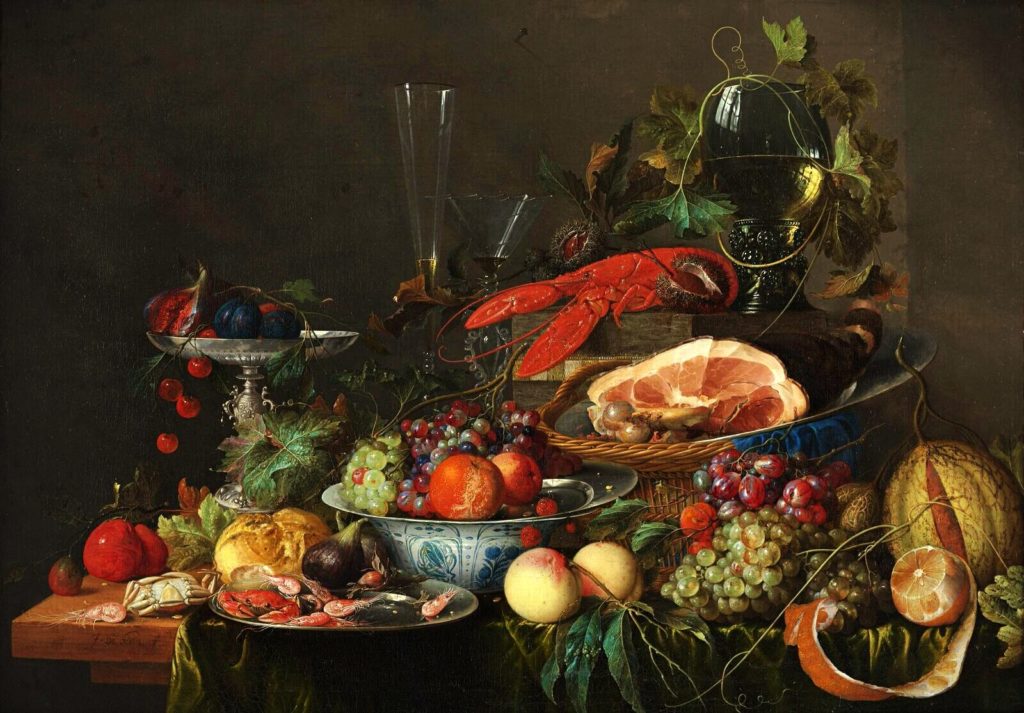
Various berries, grapes, vegetables, hams, lobsters, and shrimps show the richness of nature. The exotic at that time, a lemon and a Chinese bowl reveal contact with distant lands. For Jan Davidsz. de Heem (1606–1684), a Dutch painter, these delights were the order of the day. However, they are transient in the extreme. Therefore, we should enjoy what nature can offer now and not wait for a suitable moment.
The exquisite artwork can inspire us to appreciate summer days. At a summer party or feast, you may need:
When the party is over, why not stay and linger over a cup of tea? Tea has come a long way from China. The original birthplace of wild tea trees is the southwest part of the country, the sub-tropical mountainous area.
At first, tea was only used as ceremonial offerings or food. In the Tang dynasty (618–907 CE), when Buddhism was at its peak in popularity, Buddhists found out that tea can relieve drowsiness when meditating. Therefore, tea drinking was promoted, and almost every monastery had tea. Soon, tea was accepted by the masses, from highly noble families to merchants and labor workers.
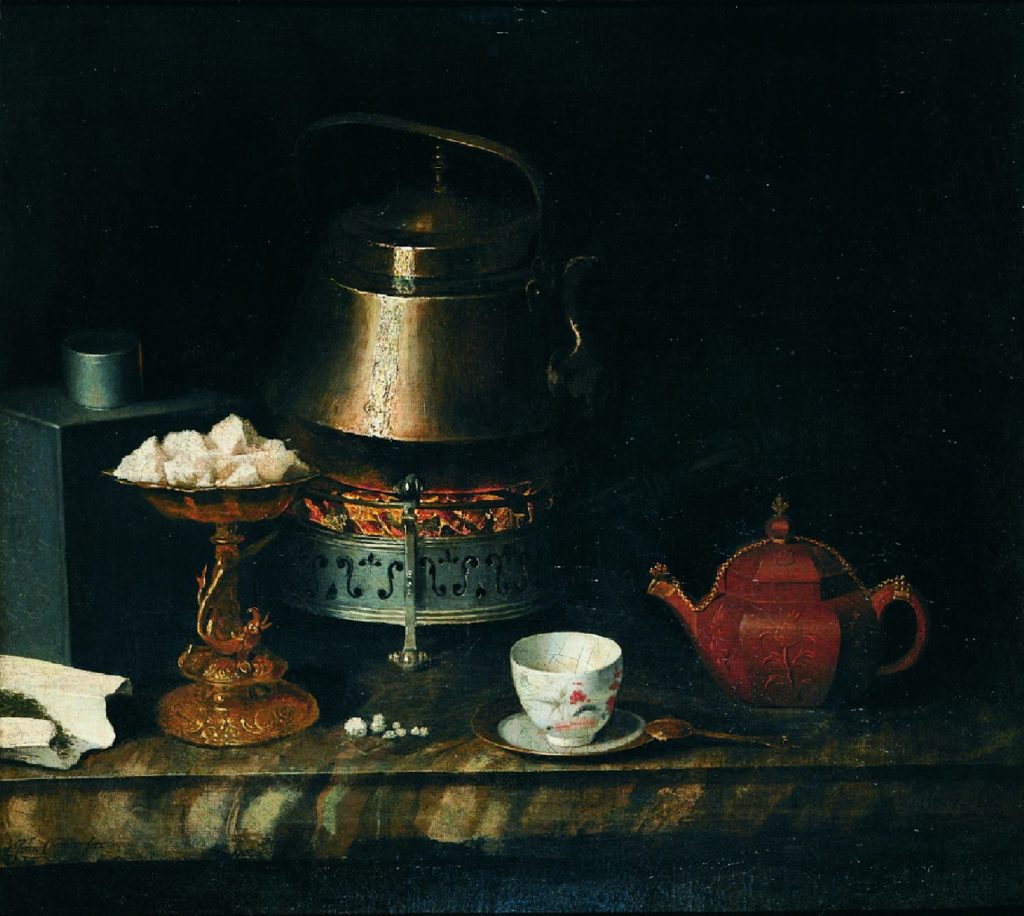
Owing to the development of trade, tea drinking became popular in other countries. In Europe, the earliest tea drinkers were the British. At the beginning of the 17th century, they had already tasted tea from China. Johann Zacharias Kneller (1642–1702), a German Baroque artist, painted Still Life of a Tea Table, depicting the set for the preparation of tea.
Back in China, two or three people would gather together in a tea battle. Each presented one’s best available tea. After heating water and brewing, the best tea was the winner. The “pure white” or clear type of tea was the superior kind.
It is worth celebrating this beautiful summer day with a cup of tea. Fanny Brate (1861–1940), a Swedish artist, in A Day of Celebration meets the summer with her daughters, Astrid and Torun, in their family home. The young ladies lay the pleasant table with leaves, flowers, teacups, and their favorite dessert, pie with fruit, preparing for the festive occasion.
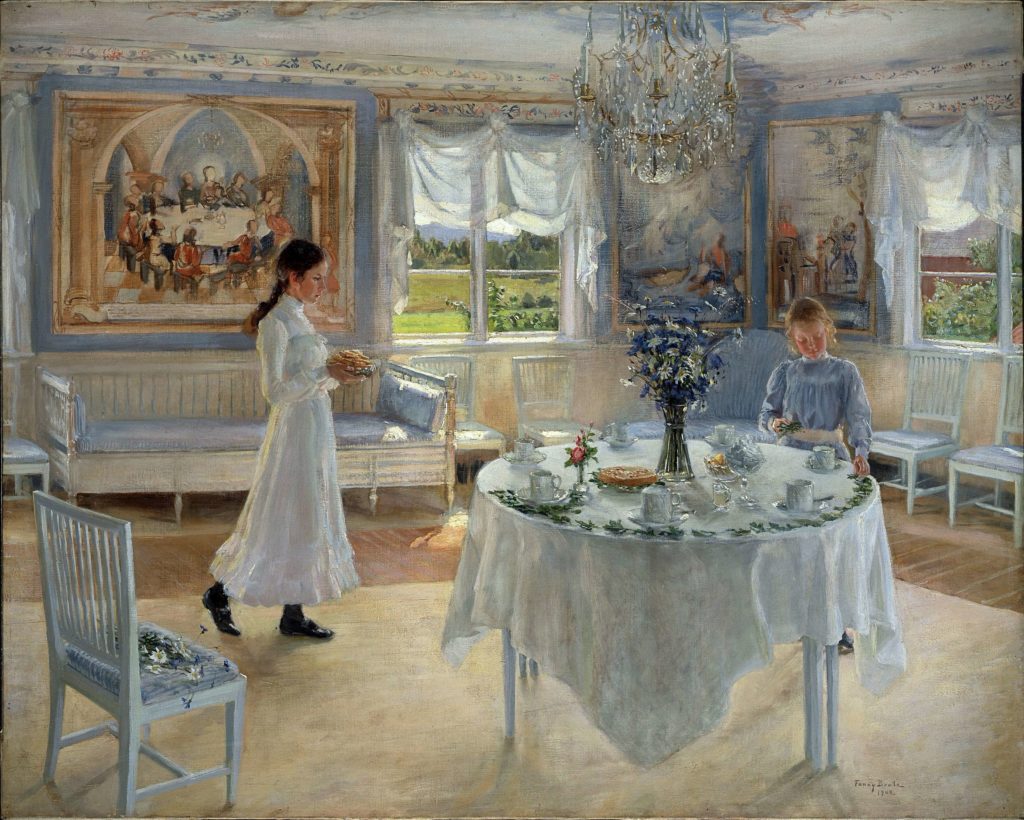
The wonderful view on the field and distant forest, solemn paintings, and a table with a bouquet of flowers can make the meal more enjoyable. The depiction of a happy childhood with romanticism and the meadow flowers evoke the image of the season. The interior, vernacular objects, and the table highlight the warm days full of light, fresh flowers, and tasty meals.
The summer has finally come and you no longer need to chase it. Just explore it. An American artist, William Merritt Chase (1849–1916) might have agreed with this intention. In his Summer at Shinnecock Hills, the painter invites us to wander around the hills. After the sumptuous summer meal, why not appreciate the beauty of nature that changes so often?
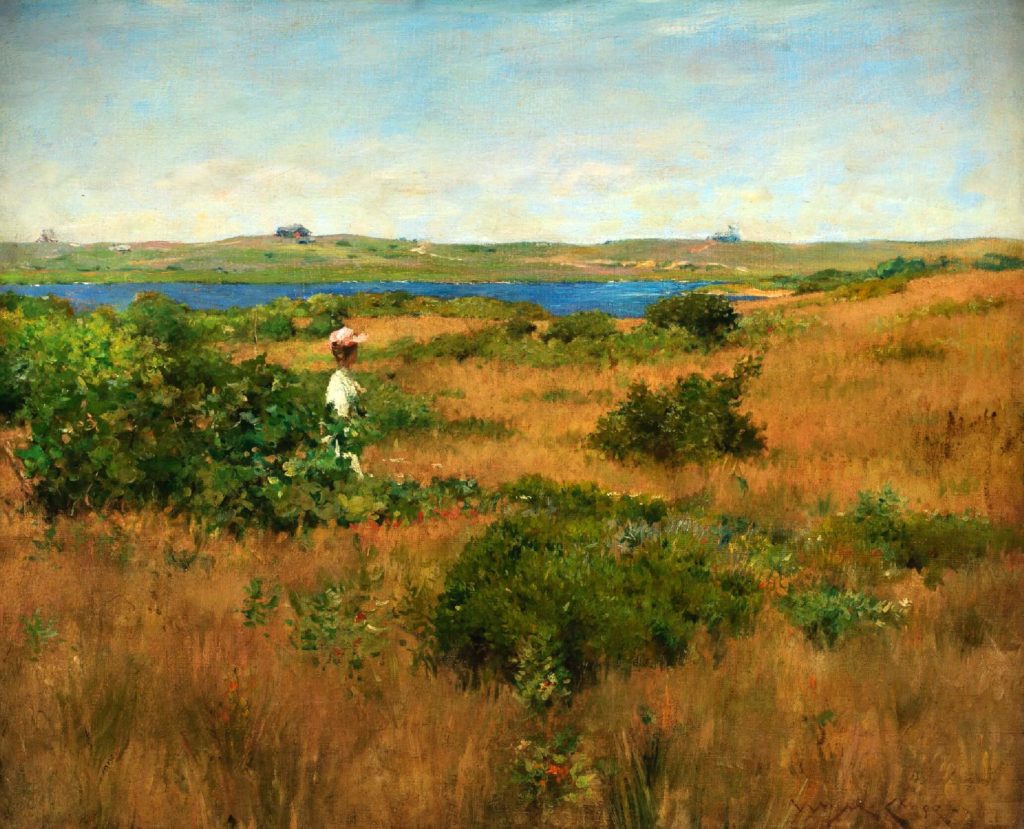
Wandering around the hills, it feels like nature is all yours, and many joyful summer days lie ahead. These surroundings can also be conducive to developing artistic skills. Keeping this in mind, Chase opened the Shinnecock Hills Summer School of Art in 1891. The artist adopted the plein air method of painting and taught his students in outdoor classes. Consequently, they could relish summer, acquire skills, and enjoy the gifts of nature.
Peaches and grapes attracted a loving eye and a skillful hand to transfer their freshness to the canvas. Fruit just picked from the orchard is wonderful to look at and a feast in itself. A German artist, Gottfried Wilhelm Voelcker (1775–1849) painted his Fruit Pieces to show summer in all its magnificence.
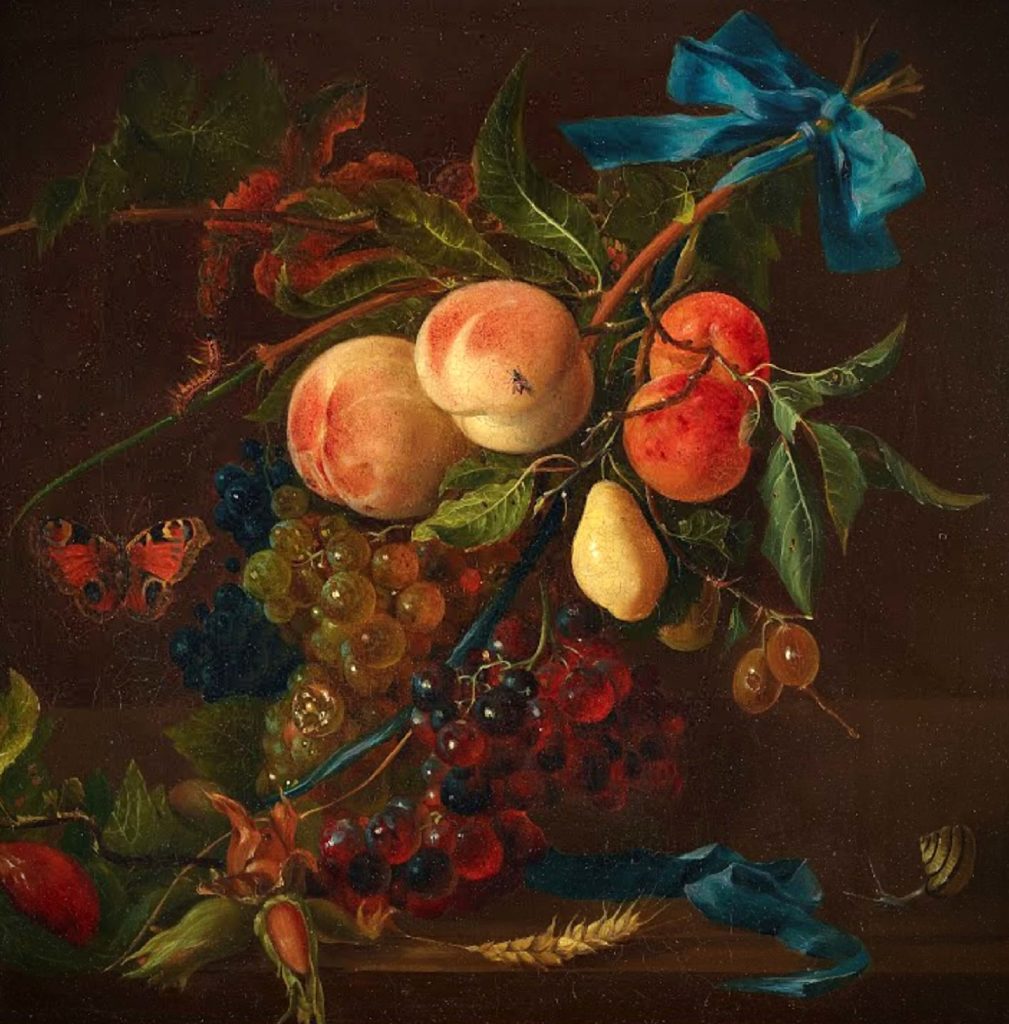
Over the course of many centuries, artists depicted meals to savor on a summer day. Artists of the Dutch Golden Age immortalized the gifts of nature in the sumptuous tables. At the end of the 19th century, different generations of artists brought the representation of the meal to another kind of perfection. Irrespective of the period, painters always feasted their eyes on the food. As a result, they continue to inspire us with their exquisite works of art.
DailyArt Magazine needs your support. Every contribution, however big or small, is very valuable for our future. Thanks to it, we will be able to sustain and grow the Magazine. Thank you for your help!